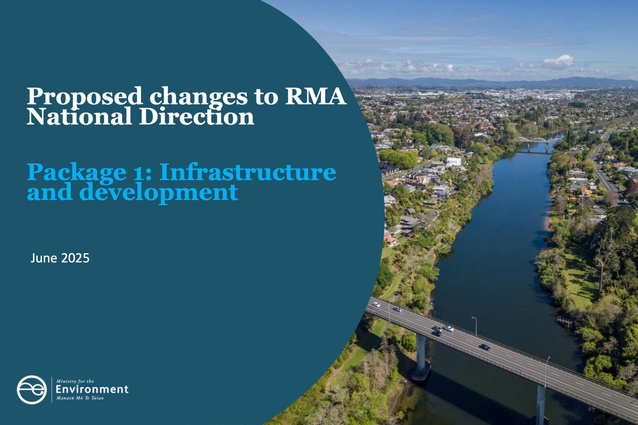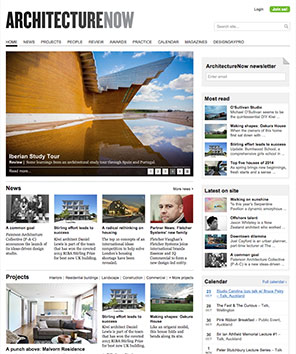Reframing Infrastructure: Ant Vile
Ant Vile writes a response to proposed changes to RMA National Direction, highlighting the need for embedding public good, design quality and Te Tiriti commitments.
Package 1: Infrastructure and development
The proposed National Policy Statement on Infrastructure (NPS-I)
Background “The Government is proposing a new and amended national direction to improve the operation of the resource management system under the Resource Management Act 1991 (RMA). An updated national direction is needed to set national-level resource management policy and rules that inform regional and local plans, policy statements and resource consent decisions.
National direction comprises national policy statements, national environmental standards, national planning standards and regulations made under section 360 of the RMA.”
As New Zealand redefines its planning frameworks, the proposed National Policy Statement on Infrastructure (NPS-I) provides a critical opportunity to reframe infrastructure not simply as a delivery tool but as a strategic driver of equity, resilience, and quality urban environments.
By providing a more coherent and enabling policy environment for infrastructure development, the NPS-I creates potential opportunities for built environment design professionals to contribute to well-planned, resilient, and sustainable infrastructures that support communities and the natural environment. However, we should continue to advocate for stronger, explicit mandates for design excellence, the integration of Te Ao Māori and Te Aranga Design Principles, and robust frameworks for environmental protection to ensure that “efficient” delivery also means high-quality, enduring, and culturally appropriate infrastructure.
In essence, if the NPS-I facilitates faster delivery of disconnected, environmentally impactful infrastructure, it’s a false efficiency. If it truly enables the accelerated delivery of culturally resonant, climate-resilient, and community-integrated infrastructure through genuine partnership, then it will be a significant and welcome step forward.
My view is that the NPS-I could further integrate and consider the following points:
Infrastructure must be spatially integrated
Infrastructure is not merely reactive — it actively shapes urban form and environmental outcomes. The NPS-I must ensure alignment with Future Development Strategies (FDS), the NPS on Urban Development, and the Government Policy Statement on Housing and Urban Development. This would affirm the infrastructure’s role in supporting well-functioning urban environments.
Infrastructure as a public good
Too often treated as a technical exercise, infrastructure should be reframed as a public good, enabling health, equity, and sustainability. The NPS-I should require distributional equity assessments and integration of green, blue, and civic infrastructure in every region.
Design quality is not optional
Design outcomes must be explicitly included in infrastructure decision-making. Public realm planning, green networks, and connectivity must be integrated in every major project. The NPS-I should make these outcomes a requirement, not an afterthought.
Te Tiriti commitments and section 6(e) must endure
With the repeal of the RMA, the protections of Section 6(e) — recognising Māori relationship with ancestral lands and taonga — must not be lost. The NPS-I must give effect to Article 2 of Te Tiriti o Waitangi and uphold tino rangatiratanga over land, water, and cultural landscapes. Mana whenua must be partners, not stakeholders.
Funding tools must align with national outcomes
SPVs (under the Infrastructure Funding and Financing Act 2020) and fast-track consenting can accelerate delivery, but without clear policy alignment, they risk bypassing environmental, social, and Treaty commitments. The NPS-I should explicitly require these tools to demonstrate alignment with regional strategies, design principles, and iwi engagement.
We need a non-partisan urban development authority
Large-scale, integrated urban development cannot be achieved within the political cycle alone. New Zealand needs a nationally mandated, non-partisan urban development authority with long-term powers to coordinate infrastructure, housing, design, and Treaty obligations. This would ensure projects of national significance are guided by enduring values, not short-term politics.
A national spatial plan is critical
New Zealand lacks a clear national spatial direction. A National Spatial Plan could clarify where and when infrastructure and housing should be prioritised, how ecosystems and climate risks are managed, and how regional inequities can be addressed. The NPS-I should help lay the foundation for this kind of spatial clarity.
Reframing housing as infrastructure
If infrastructure is what enables wellbeing, housing must be recognised as core infrastructure. Housing is not a downstream effect of infrastructure — it is part of the system itself. Recognising housing as infrastructure would shift how we fund, finance, and integrate it into long-term planning. It would also elevate housing to the same strategic tier as transport, energy, and water, especially in growth areas.
Conclusion
The NPS on Infrastructure can be a visionary document — one that reorients the system toward integration, sustainability, and public good. Infrastructure is no longer just pipes and roads but a foundation for equitable, high-quality communities. Infrastructure is the new architecture.
Any person may make a submission on the proposal, through the link below by either filling out the feedback form or by uploading your own written submission. Submissions close at 11:59 pm on 27 July 2025.
Make your submission here before 27 July 2025.










